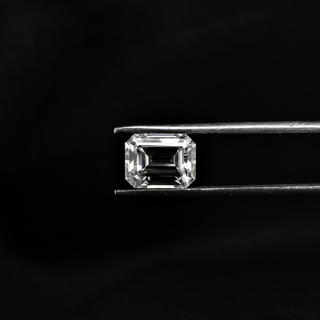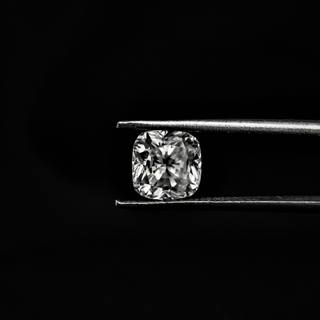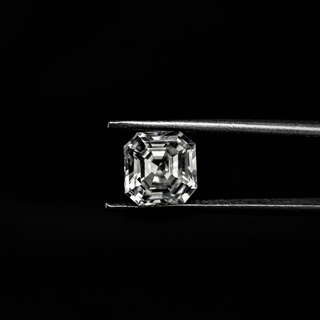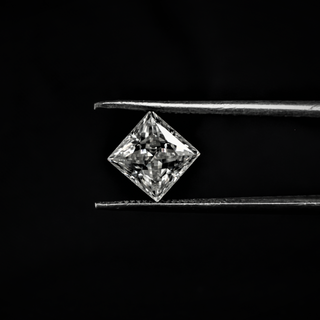Moissanite is renowned for its fiery brilliance and striking resemblance to diamonds, but few people are aware of its origins. Is it mined from the earth like traditional gemstones? Can you find Moissanite in nature, or is it all lab-made?
Come, let's discover the Origins of this beautiful Gemstone
In this blog, we’ll explore the fascinating facts about Moissanite's natural origins, why it’s so rare in the wild, and how this incredible gem made its way from outer space to the jewelry world.
The First Discovery of Moissanite

Moissanite was discovered in 1893 by Henri Moissan, a French chemist who later won a Nobel Prize in Chemistry. While examining rock samples from a meteor crater in Canyon Diablo, the area of Arizona, he found shimmering crystals he initially believed to be diamonds but when he keenly observed the stone he found out everything was different about it, he realized the crystals had a different composition, silicon carbide (SiC)—a mineral never before identified in nature. Then, later on this new gemstone was named “moissanite” in his honor.
Because it came from a meteor, moissanite earned a celestial nickname: “Stardust Gem” and many use to call it “Gemstone from the Stars.”
Read More:- The History Of Moissanite
Is Moissanite Found Naturally?

Yes, but very rarely. While moissanite does occur in nature, it’s so scarce that it’s practically unusable in commercial jewelry.
Where Has Natural Moissanite Been Found?
Meteorites: Tiny moissanite crystals are sometimes found in meteorite fragments.
Ultramafic rocks: Rarely, small amounts occur in deep-earth volcanic rocks.
Kimberlite pipes: These volcanic formations (also home to diamonds) can contain trace amounts of moissanite.
High-pressure zones: Moissanite forms under intense temperature and pressure, which are not common near the Earth’s surface.
Despite these occurrences, natural moissanite is typically too small, flawed, or rare to be cut for use in jewelry.
Why Lab-Created Moissanite Became the Standard

Because natural moissanite is nearly impossible to source in large sizes or gem-quality clarity, scientists have begun developing methods to create moissanite in laboratories.
By the 1990s, companies like Charles & Colvard in the U.S. perfected the process of growing silicon carbide crystals in controlled lab environments.
Today, all moissanite used in almost all fine jewelry such as rings, earrings, and necklaces and more are lab-created Moissanites.
Is Moissanite a “Natural Gemstone”?

Technically, moissanite is a naturally occurring mineral, but the kind you find in jewelry is lab-grown due to the extreme rarity of natural sources.
This doesn’t reduce its value. In fact, lab-created moissanite:
-
Moissanite is ethically produced
-
Moissanite Leaves no environmental damage
-
Moissanite delivers consistent clarity and brilliance
-
Moissanite has the same hardness and sparkle as its natural form
The Unique Appeal of Moissanite

One of moissanite’s most fascinating qualities is its connection to outer space. While diamonds form deep underground, moissanite literally came from the stars. That makes it a romantic, symbolic, and deeply meaningful gem for many people.
It also explains why moissanite is not typically mined or sourced like traditional stones. Instead, its celestial legacy lives on through lab-grown versions of moissanite that are available worldwide.
Conclusion
So, where is moissanite found? Naturally, in meteorites, deep volcanic rocks, and high-pressure zones. But due to its extreme rarity, the moissanite you wear is carefully created in laboratories to match the brilliance, durability, and beauty of the original gem from space.
With a story that begins in a meteor crater and ends in dazzling fine jewelry, moissanite is more than just a diamond alternative; it’s a gem with a cosmic connection to the world of jewelry and diamonds, and other gemstones.
FAQs
1. Is moissanite a natural or synthetic gem?
It’s naturally occurring but synthetically grown for jewelry use due to its rarity.
2. Can I buy natural moissanite?
Not practically. Natural moissanite is too rare and tiny for jewelry purposes.
3. Where was moissanite first discovered?
In a meteorite crater in Arizona by Henri Moissan in 1893.
4. Does moissanite only come from meteorites?
That’s where it was first found, but it also forms under extreme geological pressure.
5. Is lab-grown moissanite real moissanite?
Yes. It is chemically and optically identical to the natural version.





